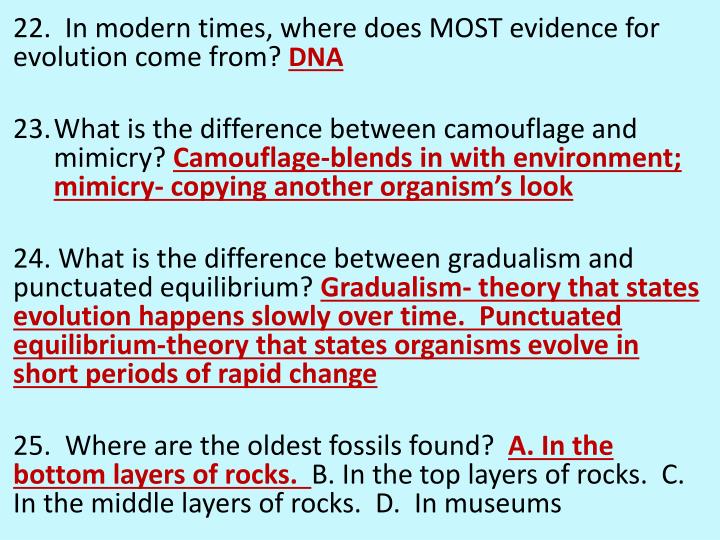Review Study Guide Evolution Unit
Review your notes or the 2. Go to the quizalize app and take the practice quizzes. Describe Darwin's journey and observations; biogeography 4. Explain the significance of the Galapagos finches and common descent 5. Describe the process of natural selection in three steps. Review taxonomy and the naming of species ( binomial nomenclature) 7. Be able to interpret a cladogram or a phylogenetic tree 8.
Define evolution - be specific 9. Relate the terms of fitness, selection strength, and polymorphisms 10. Compare divergent evolution to convergent evolution and provide examples. Provide evidence of evolution (fossils, anatomy, embryology, biogeography, molecular biology) 12. Be prepared to discuss and debunk common myths of evolution. Applied thermodynamics by eastop and mcconkey 5th edition solution manual. Define speciation and describe how it occurs. ( sympatric vs.


Allopatric; adaptive radiation) 14. Describe the four types of pre-zygotic isolating mechanisms (examples) 15. Describe post-zygotic isolating mechanisms (examples) 16. Provide examples of hybrids; discuss why hybrids provide clues about our evolutionary past and the future of current species. Chapter 19: The Evolution of Populations. Explain how allele frequencies can be used to measure evolution.
Be able to apply the Hardy Weinberg equation to a populations study. (You do not need to memorize this equation.) Sample problem: 81 of 1000 sneetches have the recessive trait of long hair. (hh) How many sneetches are heterozygous for short hair? List (describe) the five criteria that can result in changes to allele frequency. Mutation gene flow sexual reproduction genetic drift bottleneck effect founder effect natural selection 4.

Describe the three types of selection and be able to identify them on a graph. (directional, stabilizing, disuptive) Chapter 20: Phylogenies and the History of Life 1. Exmaine and analyze a phylogenetic tree 2. Describe the levels of classification (Linnean) and explain how taxonomy relates to evolution. (Also explain how organisms are named using this system.) 3. Describe how the system of cladistics is used to build phylogenetic trees. Extra: Human Evolution & Head Lice This case study focused on how head lice and cladistics were used to determine the period of time when humans started to wear clothes.
Review Study Guide Evolution Unit 1b
Review this case study, paying attention to vocabulary and concepts related to human evolution. Case Studies and Activities: White-Striped Clover Lactose-Lactase Study (from the enzyme unit) but comes up again in this unit Stickleback Evolution The Tale of Three Lice Pocket Mice and Hardy Weinberg.
Study Guide Answers
Work on Keystone Review Packet #3 Work on Keystone Review Packet #3 Mini-THON 6-12 CHS 4/4 Monday 10.4 Evidence of Evolution and 10.5 Evolutionary Biology Today Read 10.4 and 10.5 Finish Study Guide 4/5 Tuesday Check Study Guide Amino Acid Sequencing Lab Finish Lab Review Sheet 4/6 Wednesday Collect Lab Check Keystone Review Packet #3 11.1 Notes Genetic Variation within Populations Finish Review Sheet and STUDY 4/7 Thursday QUEST Chapter 10 Study for Keystone Quiz 4/8 Friday Keystone Review Quiz #3 Bioenergetics Keystone Review Packet #5. M 4/11 Natural Selection Notes 11.2 Intro to Natural Selection Lab. see link below Study Guide 11.2 T 4/12 Natural Selection Lab Finish Lab W 4/13 11.3 Other Mechanisms of Evolution Keystone Review Packet Due Study Guide 11.3 Th 4/14 11.5 Speciation 11.5 Study Guide STUDY FOR QUIZ F 4/15 Keystone Review Quiz 11.6 Patterns in Evolution Finish Study Guide M 4/18 Wrap up Evolution Review Sheet Finish Review Sheet T 4/19 Review Day STUDY. will check Keystone Packet on THURSDAY bc of TEST Quiz will be Friday! W 4/20 TEST Evolution Chapter 10 and 11.